Contents
Guide


DEDICATION
To Dad, who taught me how to save, and to Mom, who taught me how to preserve.
2020 by Jackie Callahan Parente and Fox Chapel Publishing Company, Inc., 903 Square Street, Mount Joy, PA 17552.
Except as noted below, content in Canning Essentials was previously included in Can It! (2011), originally published by BowTie Press. All rights reserved. No part of this publication may be reproduced, stored in a retrieval system or transmitted, in any form or by any means, electronic, mechanical, photocopying, recording or otherwise, without the prior written permission of the copyright holders.
Recipes for Kosher Dill Pickles provided by Jarden Home Brands, marketers of Ball and Kerr fresh preserving products. Jarden Home Brands is a division of Jarden Corporation.
Recipes on pages were originally published in Amish Community Cookbook (978-1-56523-878-7, Fox Chapel Publishing).
Shutterstock cover images: Chantal de Bruijne (front cover top background, back cover center background); Elena Ray (front cover center); LaineN (front cover bottom right, front cover bottom center); TDMuldoon (front cover bottom left); Valeriana Y (front cover bottom background, back cover bottom background)
Print ISBN 978-1-4971-0100-5
eISBN 978-1-6076-5811-5
Library of Congress Control Number:2019948125
To learn more about the other great books from Fox Chapel Publishing,
or to find a retailer near you, call toll-free
800-457-9112 or visit us at www.FoxChapelPublishing.com.
We are always looking for talented authors. To submit an idea, please send a brief inquiry to .
This book has been published with the intent to provide accurate and authoritative information in regard to the subject matter within. While every precaution has been taken in the preparation of this book, the author and publisher expressly disclaim any responsibility for any errors, omissions, or adverse effects arising from the use or application of the information contained herein.
Contents
INTRODUCTION
Home food preservation has been a fundamental human activity until more recent generations, when developed societies migrated to industrialized farming and food preparation. Food preservation is as old as civilization. People have always endeavored to devise safe means to extend the useful life of the food that they have found, grown, caught, or killed. During the nineteenth and early twentieth centuries, many families enjoyed the benefits of homegrown/raised produce and meat, and they preserved them using a variety of familiar methods including canning, drying, salting, smoking, and, later, freezing. The second half of the twentieth century saw the emergence of mega-grocery stores, food warehouses, convenience foods, fast foods, industrial farming, and the wane of home food preservation. Our busy, dual-income, multitasking families embraced convenience and fast foods, while putting Grandmas canner on a dusty shelf or, more likely, in a yard sale. Times change and so does a societys perspective. In the twenty-first century, economic issues, concern for food safety and nutrition, and a heightened awareness for global environmental concerns are foremost. Many people are revisiting home food preservation for a variety of reasonssome that are consistent with earlier generations, such as economy and wholesome food, and others that are unique to contemporary needs.
But this renaissance poses a number of questions in the minds of the new would-be preservationist. Mom and Grandma arent around to show me how to do this. How can I be sure that Im doing it right? Is it hard? Could I poison my family? Whats the best method: canning, freezing, or drying? Can city-dwellers get into home food preservation? The stream of questions is almost endless, and the good news/bad news is that the stream of answers is, too. How does the neophyte get started without a PhD-level investment in learning?

Breathe easy. As a Wall Street Journal headline once stated, Yes, You Can. Home food preservation is not only possible for the uninitiated, but its also fun! This book is intended to bring together old-school basics and todays need for accurate, easily accessible, and succinct instructions. Ive designed it so that you can quickly get just the information that you need.
Are you new to home food preservation? Concerned about safety, nutrition, and sustainability? Focus on chapters helps you choose home food-preservation methods that best support your objectives in terms of nutrition, ease, and sustainability. Many folks have strong opinions about what method is best. Bottom line: what is best is whatever works for you and your family.
Equipped with information about the scope of food procurement and preservation, you can choose the chapter that gives you specifics about the method youre most interested in. Look at offers current recipes from Amish and Mennonite kitchensthe source of delicious homegrown taste and simple recipes. This book offers a concise survey of safe preservation methods along with tasty and convenient recipes. Because sustainability is in the forefront of many peoples minds, I offer tips and options that are eco-friendly.
You will also find handy reference information in the appendix, such as conversion charts, techniques, and more. This book is a great first step into the world of home food preservation. Enjoy the adventure! Home food preservation is a hobby that easily turns into a lifestyle.
 Home food preservation is not only possible for the uninitiated, but its also fun!
Home food preservation is not only possible for the uninitiated, but its also fun!

CHAPTER 1
A Contemporary Perspective
Food preservation has been a part of our human discourse since the dawn of civilization. From the perspective of the twenty-first century, the needs and motives of our ancestors may feel remote. But it is no less true now than it was millennia ago: you are what you eat. What has changed is the society in which we live and the food growing, gathering, processing, and preservation options now available to us. We learned that we could maximize the crop yields through monoculture, chemical fertilizers and pesticides, and industrial-size farming implements. We stopped taking ownership of our food gathering and learned to rely on commercial resources, often under the questionable banner of convenience. Dual-income families with an average of two-and-one-third children who played soccer, tennis, piano, and more didnt have the time to cook a meal let alone consider the possibility of home food preservation. Today, much of our food grows in the cans, bottles, and cellophane packs that line our grocery shelves. Or even more conveniently, our meals come to us fully prepared through an anonymously staffed drive-through window. Unlike our ancestors, we have many and varied choices regarding how we gather and store our food. Food gathering doesnt need to be delegated to nameless industrial farms and processing plants. If we want, we can take ownership of some or all of this food stewardship. While the degree of urgency may feel different today than it did for other civilizations throughout history, the core values are the same: preserve good, healthy food when its abundant to sustain us during times of scarcity.

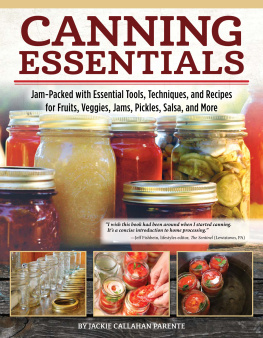
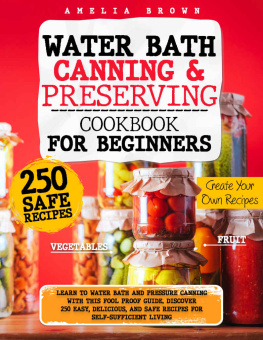
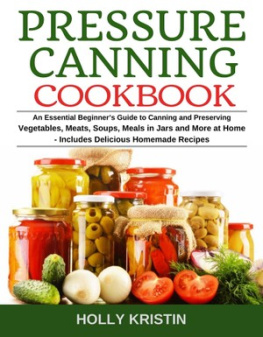
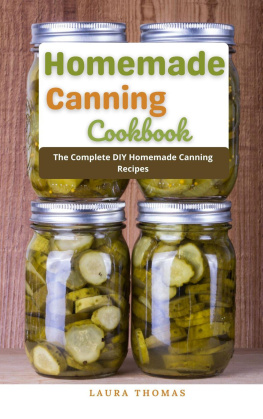
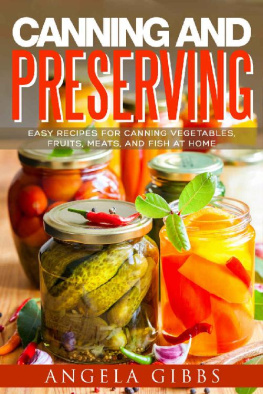
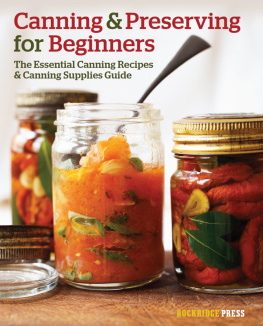

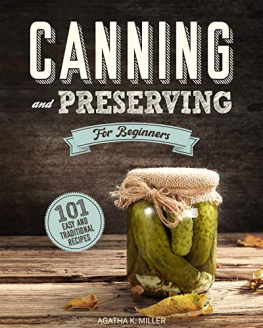
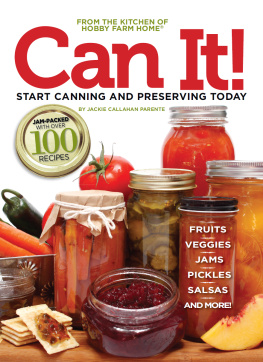
![Better Homes - Better homes and gardens you can can: [a guide to canning, preserving, and pickling]](/uploads/posts/book/188232/thumbs/better-homes-better-homes-and-gardens-you-can.jpg)

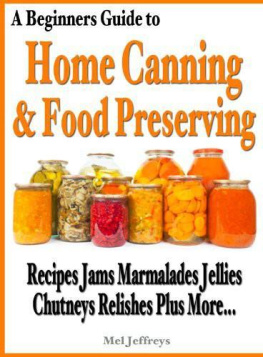




 Home food preservation is not only possible for the uninitiated, but its also fun!
Home food preservation is not only possible for the uninitiated, but its also fun!